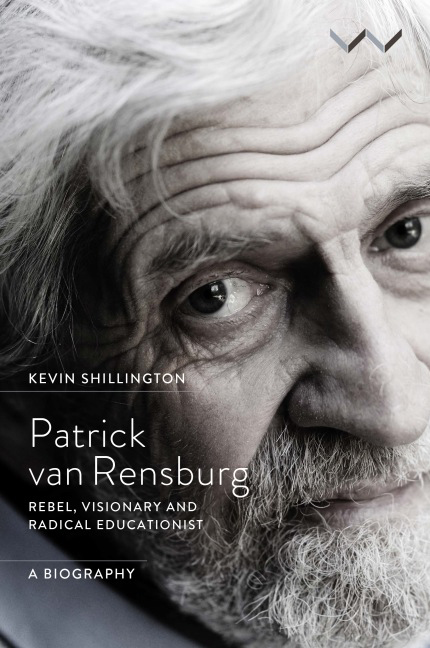Book contents
- Frontmatter
- Dedication
- Contents
- Acknowledgements
- Abbreviations and Acronyms
- List of Illustrations
- Maps
- Introduction
- 1 Origins and Identity in South Africa
- 2 An Anglophone South African, 1936–1948
- 3 The Making of an Afrikaner, 1949–1953
- 4 Diplomat and Rebel, 1953–1957
- 5 Anti-Apartheid Activist, 1957–1959
- 6 Boycott, 1959–1960
- 7 Into Exile, 1960–1961
- 8 Return to Africa, 1961–1962
- 9 The Founding of Swaneng Hill School, 1962–1963
- 10 Challenging ‘The Ladder to Privilege’, 1963–1965
- 11 The Alternative Educationist, 1965–1967
- 12 Expansion and Replication, 1967–1969
- 13 Time of Crisis, 1969–1971
- 14 Education with Production, the 1970s
- 15 Foundation for Education with Production and Spreading the Word, the 1980s
- 16 Education with Production and South Africa, the 1990s
- 17 Return to Botswana
- Epilogue
- Notes
- Bibliography
- Index
5 - Anti-Apartheid Activist, 1957–1959
Published online by Cambridge University Press: 10 September 2020
- Frontmatter
- Dedication
- Contents
- Acknowledgements
- Abbreviations and Acronyms
- List of Illustrations
- Maps
- Introduction
- 1 Origins and Identity in South Africa
- 2 An Anglophone South African, 1936–1948
- 3 The Making of an Afrikaner, 1949–1953
- 4 Diplomat and Rebel, 1953–1957
- 5 Anti-Apartheid Activist, 1957–1959
- 6 Boycott, 1959–1960
- 7 Into Exile, 1960–1961
- 8 Return to Africa, 1961–1962
- 9 The Founding of Swaneng Hill School, 1962–1963
- 10 Challenging ‘The Ladder to Privilege’, 1963–1965
- 11 The Alternative Educationist, 1965–1967
- 12 Expansion and Replication, 1967–1969
- 13 Time of Crisis, 1969–1971
- 14 Education with Production, the 1970s
- 15 Foundation for Education with Production and Spreading the Word, the 1980s
- 16 Education with Production and South Africa, the 1990s
- 17 Return to Botswana
- Epilogue
- Notes
- Bibliography
- Index
Summary
It was made clear to Patrick that once his resignation was accepted the government would take no further responsibility for him and he would have to pay for his own repatriation to Johannesburg. He booked his flight and dispatched his car overland, by river steamer and train. US Consul Jim Green and his family threw him a leaving party at the consul's official residence, and there his numerous friends gathered to show their support for the stand he had taken and to bid him a fond farewell.
Roger McCloskey, who had been so influential in his political and social maturing, stood out particularly in Patrick's memories of the Congo. Looking back on those fifteen months many years later he interpreted Roger's role as that of an elder brother, ‘one who had helped a sibling become a man’. He had a final dinner with Dolores O’Halloran at a quiet restaurant outside of town, and early in the morning of Friday 7 June Roger and a few friends saw him off at the airport. As he looked down from the plane on the city that had changed his life his thoughts were on what lay ahead. He knew he could no longer live under the confining restrictions of apartheid South Africa, but would he find the courage to confront segregation and discrimination?
Before leaving the Congo he had given a brief interview to a reporter for the Johannesburg Star, who happened to be in Leopoldville and had got wind of his resignation. As a result, on his arrival at Jan Smuts Airport in Johannesburg late that Friday evening, Patrick was accosted by a reporter from the Rand Daily Mail eager to build a more dramatic story than the bare outline of his resignation that had appeared in the Star.
Patrick gave him no more information than he had given the Star: as a matter of conscience, he could ‘no longer defend the apartheid policy of the … South African Government’. The Mail reporter, however, elaborated on Patrick's reply, claiming that criticism had been levelled against South Africa in the Belgian Congo.4 It was Patrick's first experience of ‘fake news’ and journalistic opportunism.
- Type
- Chapter
- Information
- Patrick van RensburgRebel, Visionary and Radical Educationist, a Biography, pp. 59 - 72Publisher: Wits University PressPrint publication year: 2020

